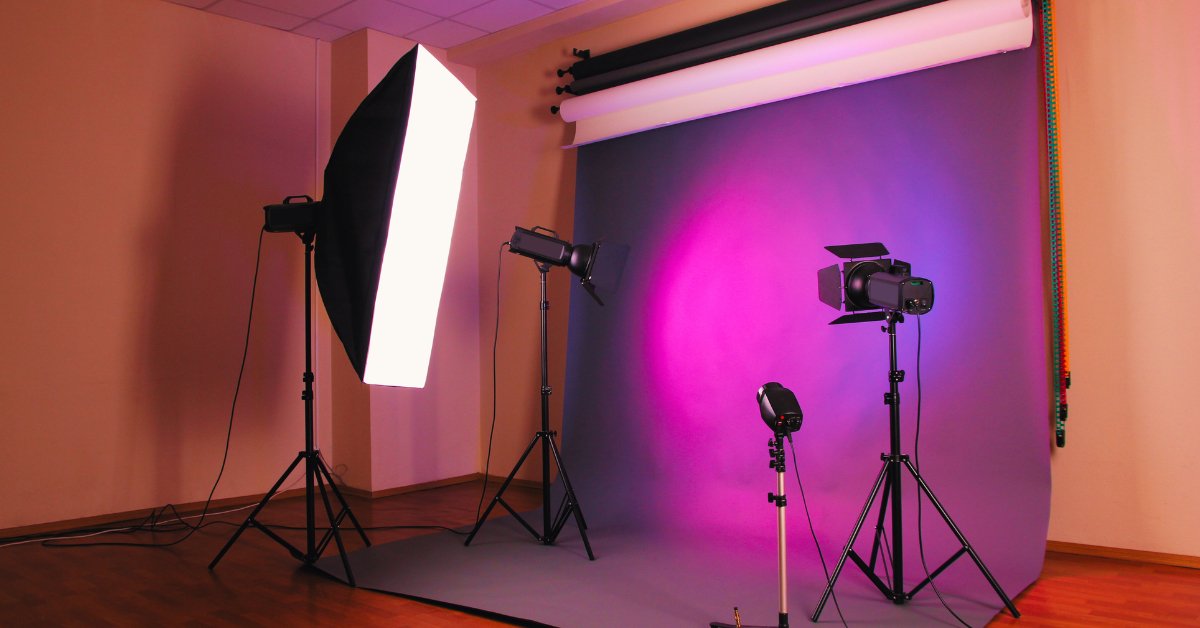Mastering Light - Ultimate Guide to LED Photography Lighting
Sep 20, 23

Mastering Light - Ultimate Guide to LED Photography Lighting
Introduction
In the world of photography, light is everything. Whether you're a professional photographer or an amateur looking to capture memorable moments, having the right lighting equipment can make a world of difference. LED lights have emerged as a game-changer in photography, offering versatility, efficiency, and control like never before. In this comprehensive guide, we'll delve deep into the realm of LED lights for photography, exploring their benefits, types, usage tips, and the top products in the market. So, let's shed some light on how LED lights can elevate your photography to new heights.
Chapter 1: Understanding the Power of LED Lights
In the quest for the perfect shot, it's crucial to grasp the fundamentals. LED lights, or Light Emitting Diodes, are semiconductor devices that emit light when an electric current passes through them. Here's why they are a game-changer in photography:
Energy Efficiency: LED lights consume significantly less energy compared to traditional lighting, making them an eco-friendly choice.
Consistency: LEDs offer consistent and continuous lighting, minimizing the need for constant adjustments during a photoshoot.
Color Temperature Control: They allow precise control over color temperature, ensuring your photos have the right mood and ambiance.
Chapter 2: Types of LED Lights for Photography
Not all LED lights are created equal. Understanding the different types available can help you make an informed choice:
Panel Lights: These are large, flat LED panels that provide even, diffused lighting for various photography scenarios.
Ring Lights: Popular among beauty and portrait photographers, ring lights create a soft, circular illumination, reducing shadows on the subject's face.
On-Camera Lights: Compact and portable, these LEDs attach to your camera for versatile, on-the-go lighting.
Tube Lights: Long, cylindrical LED lights that can be mounted on stands or held by hand, offering flexibility in positioning.
Chapter 3: Advantages of LED Lights in Photography
Why should you consider investing in LED lights for your photography setup? Let's explore the numerous advantages:
Dimmability: LED lights can be easily dimmed to achieve the desired brightness level, giving you full control over the mood of your photos.
Durability: LED lights have a longer lifespan compared to traditional bulbs, saving you money on replacements.
Instant Lighting: They provide instant illumination without the warm-up time required by some other types of lights.
Low Heat Emission: LED lights emit minimal heat, keeping your subjects comfortable and makeup intact during extended photoshoots.
Chapter 4: Tips for Using LED Lights Effectively
To get the most out of your LED lights, consider these tips:
Use Diffusers and Softboxes: These accessories can help create soft, flattering light and reduce harsh shadows.
Experiment with Color Gels: Add color gels to your LED lights to create dramatic and artistic effects.
Positioning Matters: Play around with the placement of your LED lights to achieve the desired highlights and shadows.
Combine with Natural Light: LED lights can complement natural light for stunning results.
Chapter 5: Top LED Lights for Photography
Now that you understand the benefits and types of LED lights, let's take a look at some top products that can enhance your photography:
-
GVM 1000D-RGB LED Video Light: A versatile and affordable option for both photography and videography.
-
GVM-G100W 90W LED Video Light: Known for its high-quality, consistent lighting output.
-
GVM PRO-BD45R 45W Light Stick LED Wand: A pocket-sized LED Tube Light that packs a punch in terms of brightness.
-
GVM-PRO-SD300B Bi-Color LED Monolight : Ideal for studio setups, offering professional-grade lighting.
Conclusion
In conclusion, LED lights have revolutionized photography by offering efficient, versatile, and controllable lighting solutions. Understanding the types, advantages, and tips for using LED lights effectively can significantly improve your photography. By considering top products like the GVM 1000-D, GVM G-100W, GVM Pro BD45R Tube Light, and GVM-PRO-SD300B - LED Monolight.
,you're well on your way to capturing stunning shots that stand out. So, illuminate your photography journey with LED lights and watch your creativity shine brighter than ever before.
FAQ: LED Lights for Photography
Q1: Is LED light good for photography?
A1: Yes, LED lights are excellent for photography. They offer consistent, energy-efficient, and customizable lighting, making them a versatile choice for photographers of all levels.
Q2: What is the best LED light for photography?
A2: The "best" LED light for photography depends on your specific needs, but some popular options include the GVM 1000-D, GVM G-100W, GVM Pro BD45R Tube Light, and GVM-PRO-SD300B - LED Monolight.
Q3: What light is best for photography?
A3: The ideal light for photography varies based on the situation. LED lights are versatile and suitable for many scenarios. However, natural light, when available, can be excellent for portraits and certain outdoor settings. Studio strobe lights are preferred by some professionals for studio setups.
Q4: What is the best lighting for beginners in photography?
A4: For beginners in photography, LED panel lights are a great choice. They are easy to use, offer consistent lighting, and are budget-friendly. These lights provide a forgiving learning curve while still producing high-quality results.
Q5: What lights are best for product photography at home?
A5: Product photography at home can benefit from LED lights with adjustable color temperature and intensity. Consider LED panel lights or ring lights for even and diffused lighting. Softboxes can also be useful to minimize harsh shadows and create a controlled environment for product shots.
Link to Full GVM LED LIGHTING RANGE
 
|



Leave a Comment